Chaturanga is one of the yoga poses that cause the most wear and tear and injuries in yoga. Done with poor alignment, not enough shoulder girdle stability and repeated over and over in a practice is a recipe for injury.
Let’s start with a bit of anatomy. While the hip joint is designed for its stability, the shoulder girdle is known more for its mobility. It is a spacious, shallow joint made up of 5 bones:
Scapula (shoulder blade) Clavicle (collar bone) Humerus (upper arm bone), Sternum ( breastbone) and Thorax (ribs)
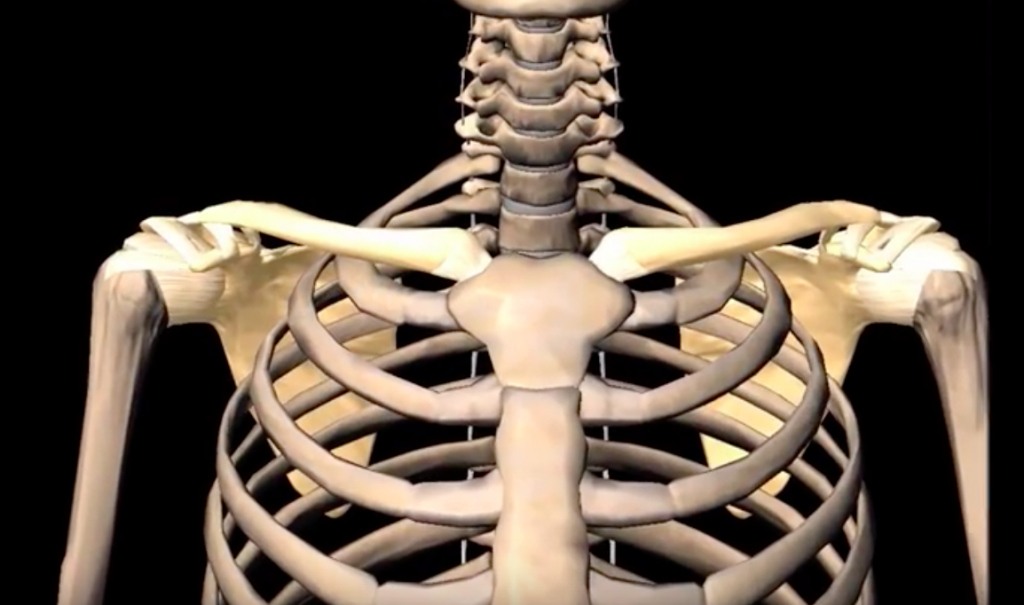
There are many different muscles at work in the shoulder girdle; either holding the five bones together or moving them. We can group these into three categories:
1.Rotator cuff muscles - is a group of muscles and their tendons that act to stabilize Glenohumeral Joint. They provide strength and stability during motion to the shoulder complex. They also move the arm sideways away from the body (as if flapping a wing) and rotate the arm in two different directions.
2. Muscles that move the humerus bone (but are not attached to the scapula)
3. Muscles that move the scapula
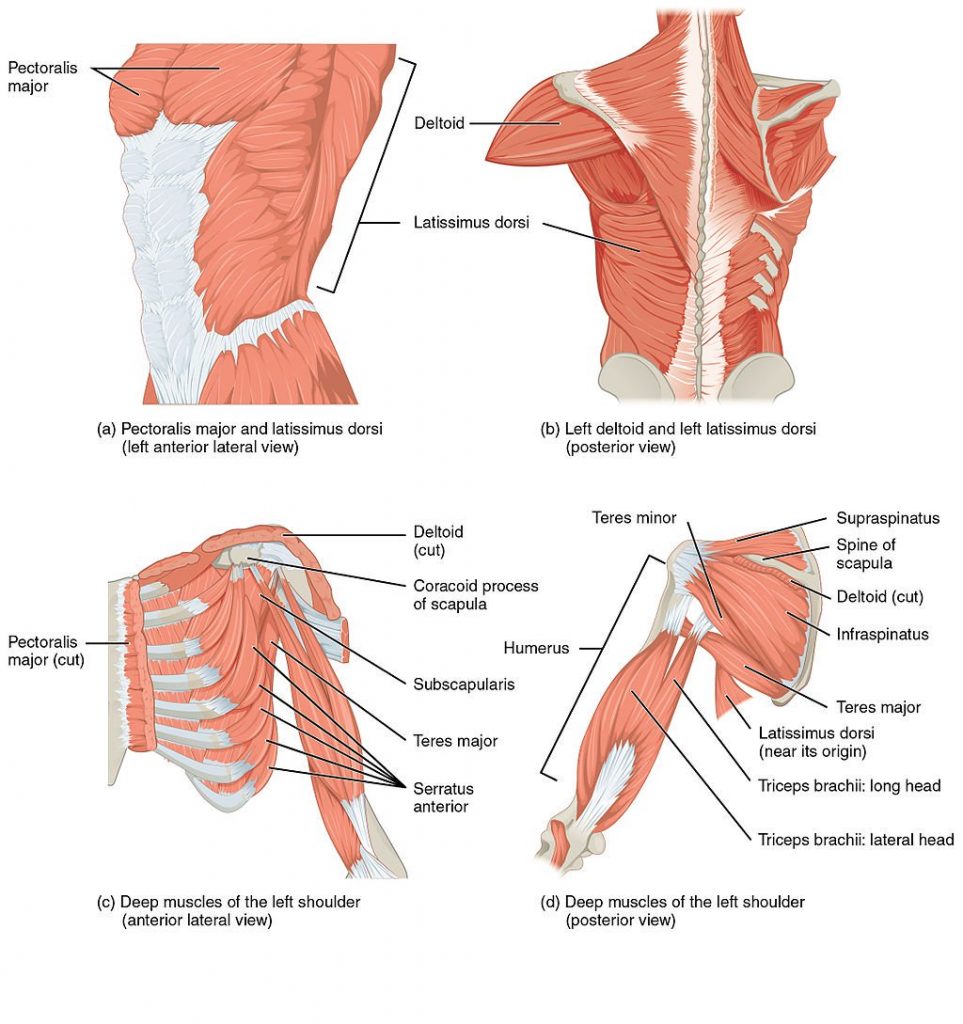
Let's focus on the third category
Sitting at the desk for too long without breaks, driving a car, watching telly on comfy sofas, can lead to tight, locked-short pectorals and serratus anterior muscles. The muscles on the front body become “tight” as in limited in their range of motion. This can also lead to weak rhomboids, trapezius and latissimus dorsi muscles.
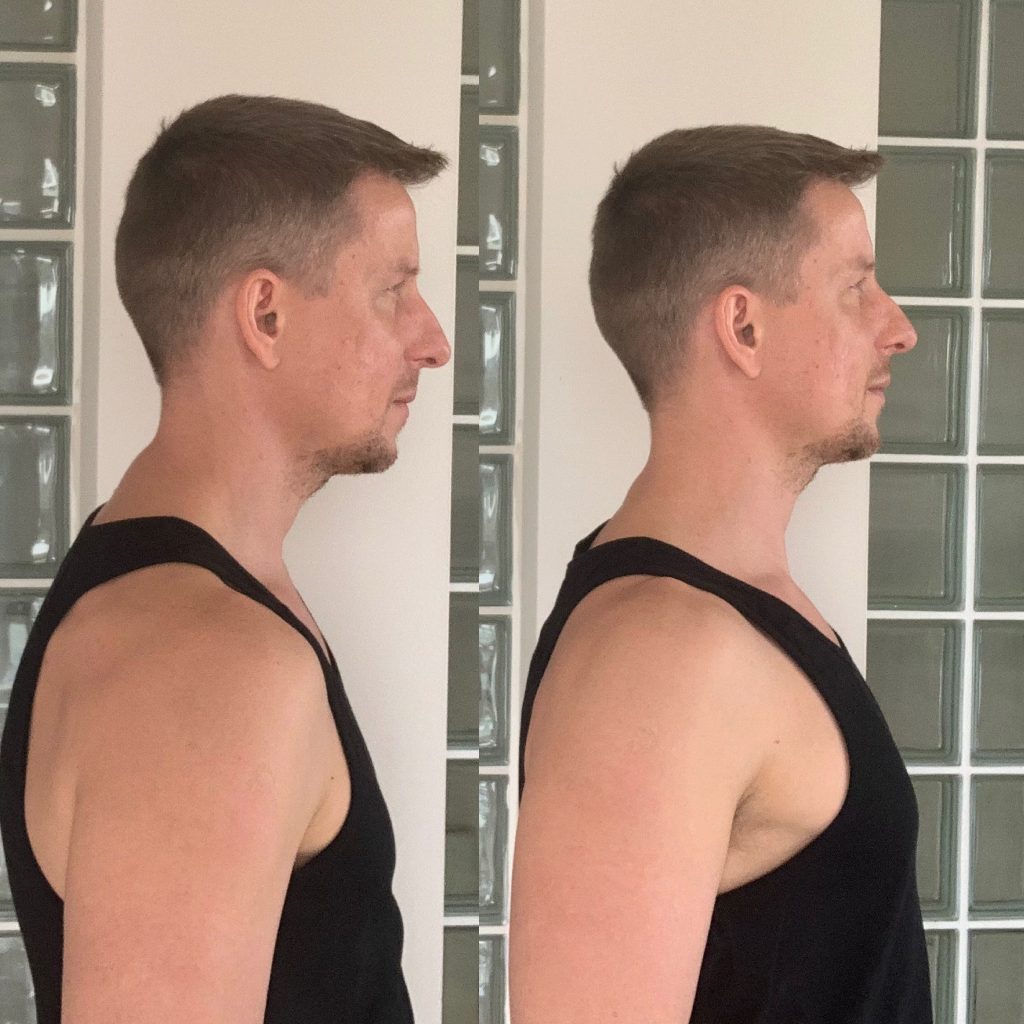
All of these habitual patterns can eventually lead to imbalance and instability in the body, putting yogis at a higher potential risk of injury if they are not acknowledged and worked with. This is especially so when practicing repetitive weight-bearing poses, such as CHATURANGA DANDASANA
Strenghten Serratus Anterior
The serratus anterior is a muscle you may start hearing more about, simply because it's so weak in the average modern human. And because it's so inactive, it doesn't stabilise the shoulder blade like it should. Thus, half the population is walking around with insufficient shoulder stability!
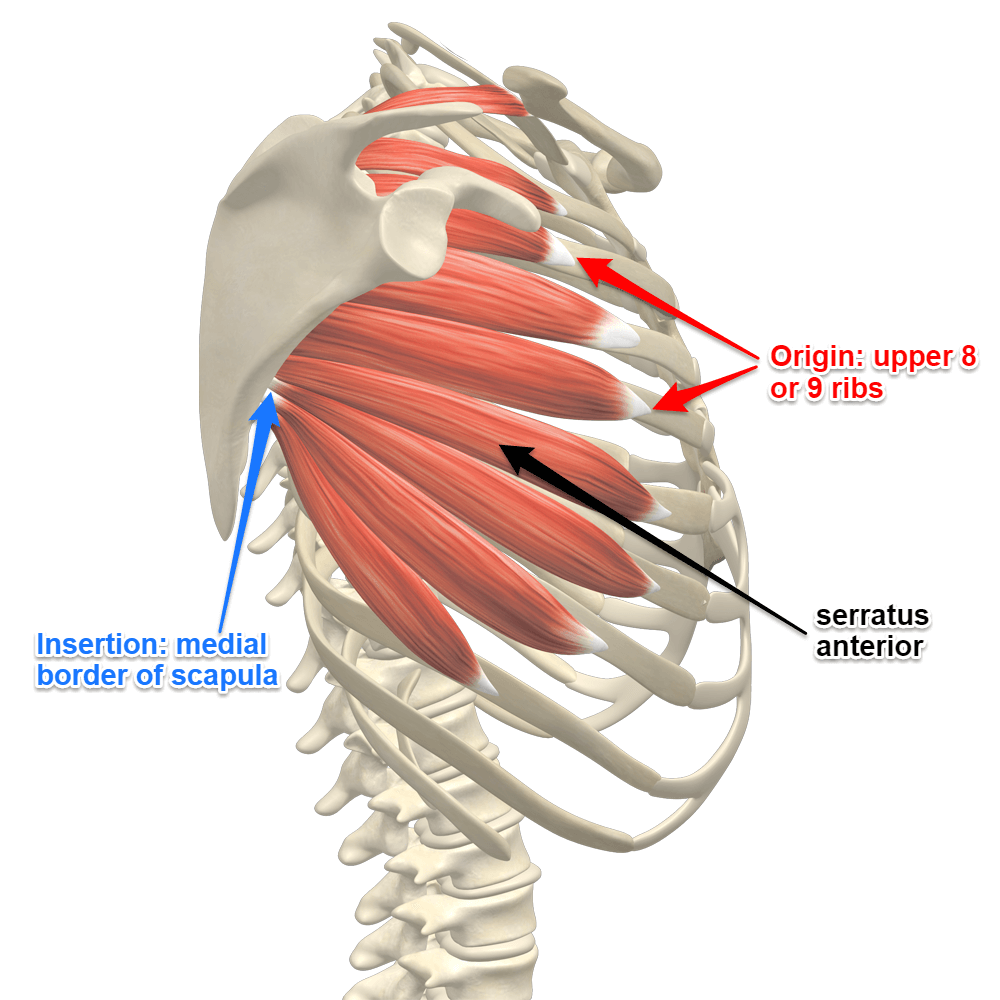
The two muscles that negotiate the placement of each scapula on the back are the serratus anterior and the rhomboid. Both muscles insert on the inner edge (or medial border) of the shoulder blade and have opposing actions. When these muscles are equally turned on, they work together to stabilize the shoulder blade on the back.
3 Key action for a “Perfect” Chaturanga Dandasana
Due to much of the weight in the upper body, Chaturanga builds strength and stability needed for arm balances so, if you would like to progress to arm balances, this is a good place to start. Since Chaturanga is a part of Surya Namaskars and connecting vinyasas, we usually just flow through the pose but this doesn’t mean we should do it quickly. Keeping the integrity of the pose from the start to the end of our yoga practice is important to avoid injury and receive the many benefits chaturanga has to offer. It is highly beneficial to take a look at the mechanics of the posture.
Tight pectorals, upper trapezius and subscapularis muscles from life’s habitual patterns have most new practitioner’s collapsing into rounded shoulders. Engaging the muscle fibres of the rhomboids, along with mid-trapezius, does effectively help to stretch the pectoralis major muscles.
What is happening at the shoulder blades in chaturanga?
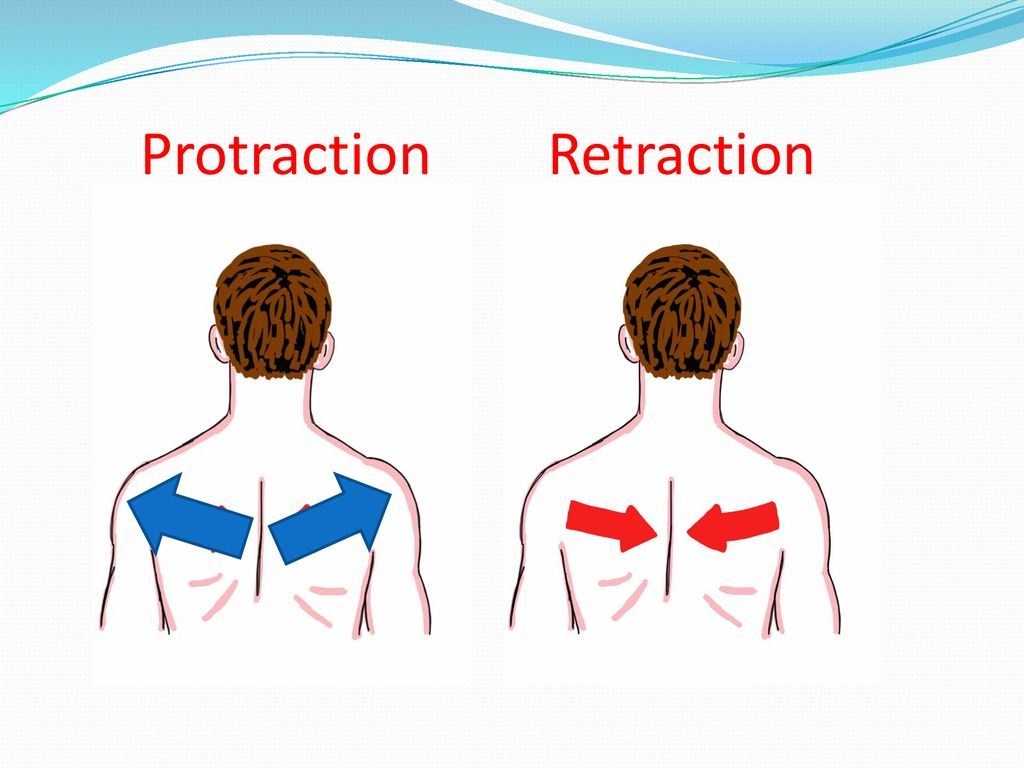
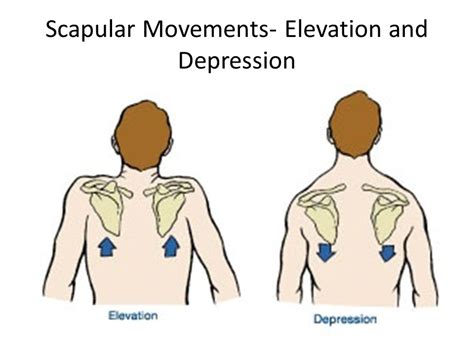
ACTION 1 RETRACTION
The scapular retraction is a movement that focuses on strength and improving the integrity of your shoulder blades. This specific exercise requires you to pull your shoulder blades closer together to the spine while preventing your shoulder from doing an upward motion or a shrug. Primary scapula retractor is middle trapezius. Rhomboids are secondary - they will retract and elevate due to their fibre direction.
ACTION 2. PROTRACTION
Separating the shoulder blades away from one another and around the rib cage creates stability and resistance against gravity. While you will likely still be in retraction of your scapula in chaturanga, I am suggesting to actively resist in order to hold the posture.
Scapular retraction refers to moving the shoulder blades (scapula) towards the spine. The opposite is protraction – moving the shoulder blades away from the spine. If you give yourself a big bear hug your shoulder blades will protract. If you try to pinch your shoulder blades all the way together they will retract. If you fully protract, fully retract, and then find the spot in the middle you will have found a good approximation of neutral.
ACTION 3 DEPRESSION
One way to stabilize the shoulder blades is to depress them down the back. In addition to stability this provides the added benefit of potentially relaxing the pectoral minor muscle which tends to get over used and abused from repetitive chaturangas.
Maximase safety by maximising stability
Mastering these shoulder actions will not only make your practice of chaturanga easier and more enjoyable but will open up a whole new world of power and strength in your arm balances. Strength builds rapidly when our actions are precise in our body.
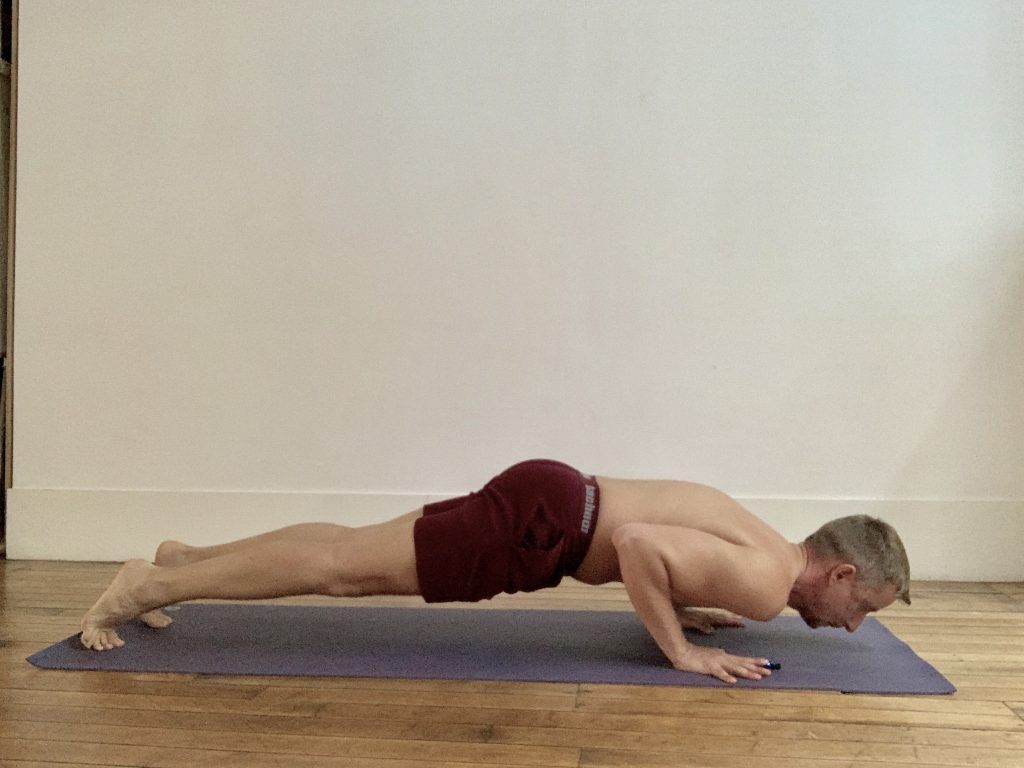
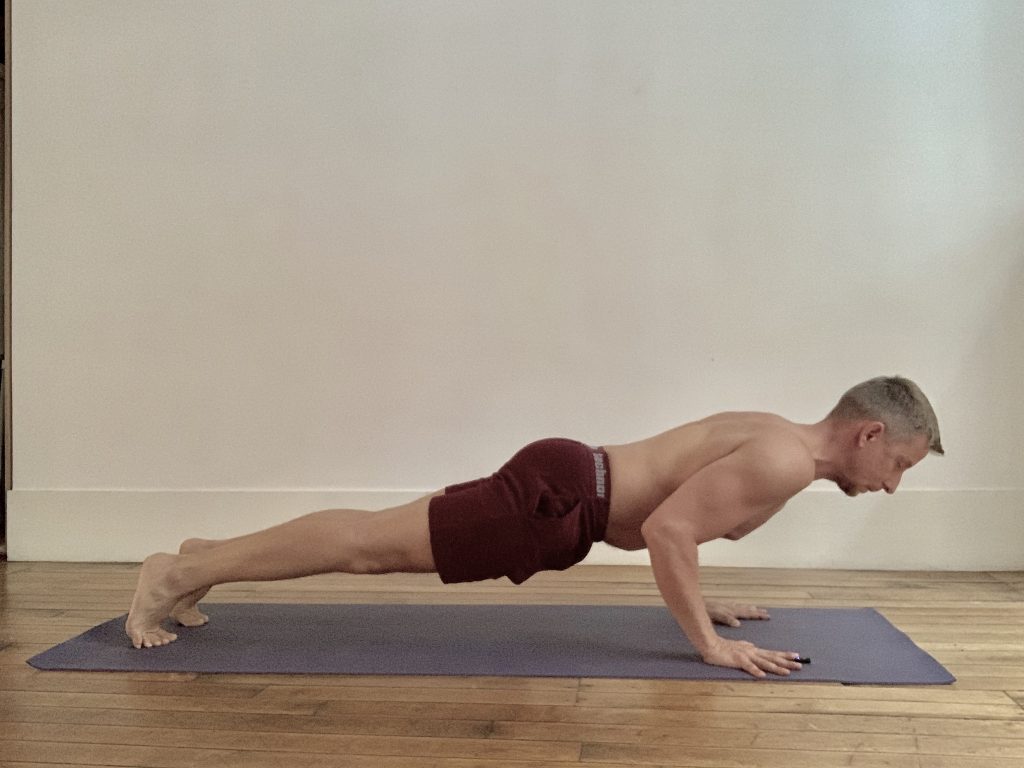
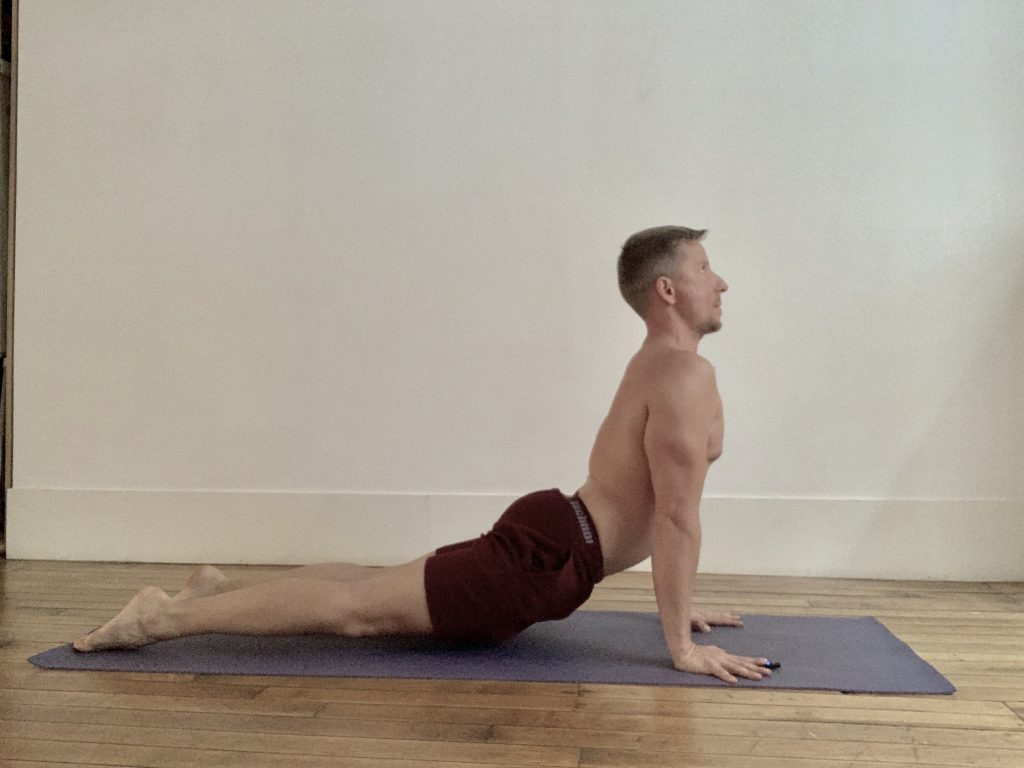
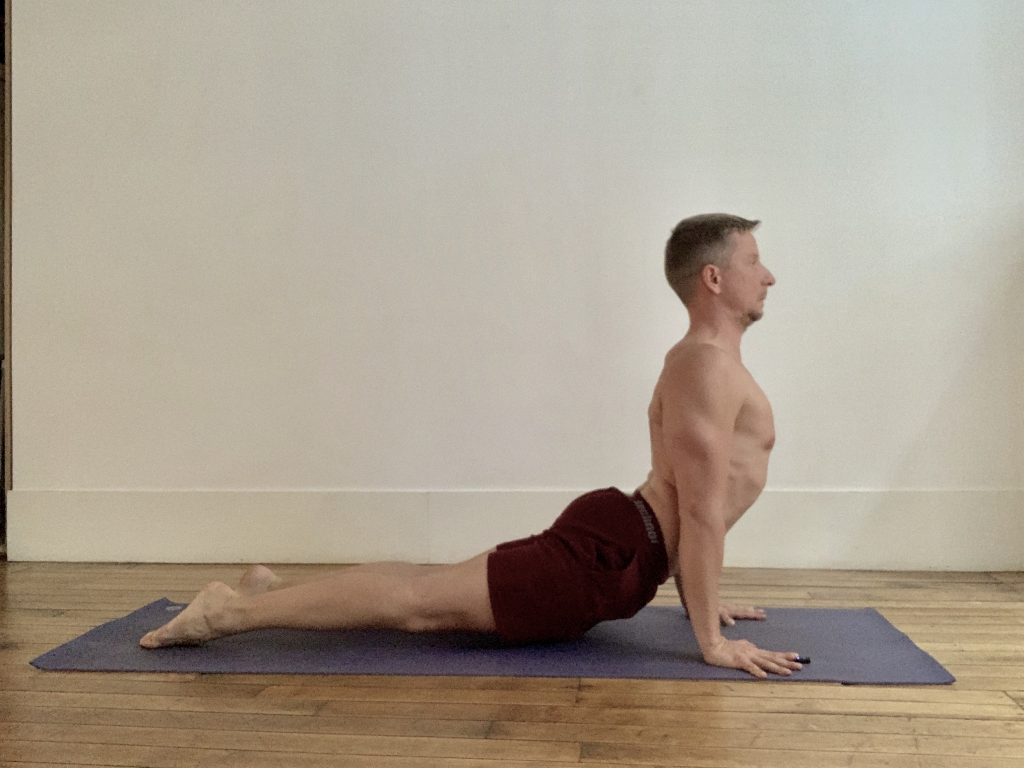
Hi Rad, sorry that we missed your course in Greece in September 2020 due to Covid-19 travel restrictions.
Great instruction video. Hoping for better times next year, in Amorgos?